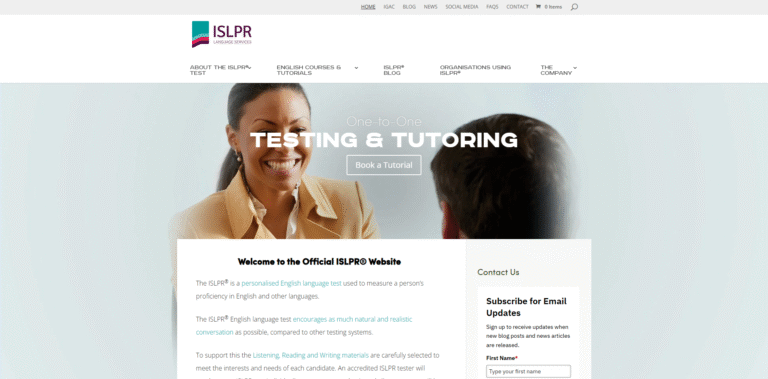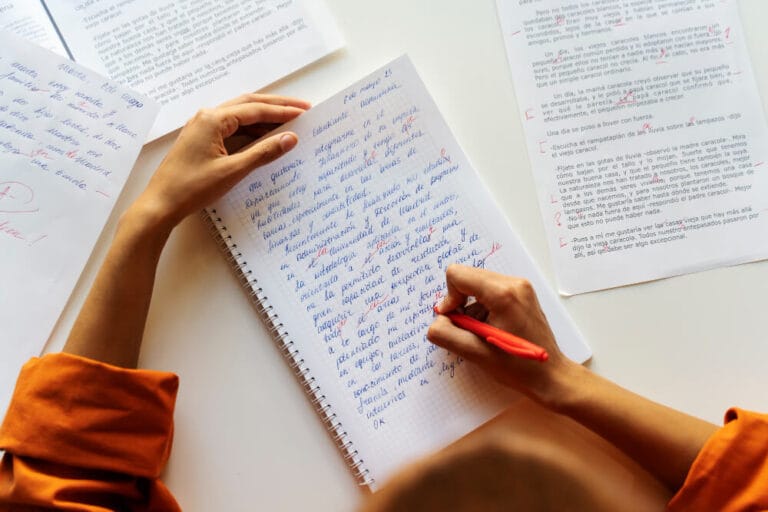Developing strong listening skills for ISLPR is the secret weapon every test-taker needs to achieve true fluency in English and dominate the ISLPR exam.
Whether you’re gearing up for high-pressure exam-day prompts, aiming to captivate an audience with confident presentations, or simply determined to understand rapid-fire conversations under test conditions, laser-focused listening skills for ISLPR practice will skyrocket your progress.
Below, we unveil five electrifying techniques packed with vivid examples and actionable guidance to transform you into an ISLPR-ready listening superstar.
1. Engage in Active Listening for ISLPR
Imagine you’re in the ISLPR exam room, headphones on, as a voice describes the environmental impact of ocean warming. Merely letting that information wash over you is passive listening and it won’t cut it. Active listening for ISLPR means intentionally engaging every part of your brain to decode meaning, notice subtle cues, and prepare your mind to respond.
For instance, if the speaker mentions a 2016 heatwave that decimated 75 percent of coral reefs, you mentally flag that statistic as you’d flag a critical fact in a test prompt. By honing in on tone changes, perhaps a slight rise in pitch when the speaker conveys urgency, you build neural connections that boost short-term recall and cement long-term retention.
Next time you practice, challenge yourself to listen for the speaker’s attitude are they hopeful, alarmed, or neutral? Summarising aloud immediately after each clip helps you mirror the exam’s paraphrasing tasks and ensures you’re not just hearing words but truly understanding intent.
2. Utilise Shadowing Techniques for ISLPR
Picture yourself shadowing a TED Talk excerpt about urban sustainability. As you hit play, you let the speaker’s voice fill your ears, noting the precise rhythms and emphatic pauses every clipped “t” in “transport” and every deliberate pause before “renewable energy.” On your first pass, you absorb meaning; on the second, you echo the words in real time, matching speed, pitch, and stress.
This is the power of shadowing for ISLPR: you train your mouth to move in lockstep with native prosody. If the speaker’s tone dips to signal completion of a thought, you mirror that falling intonation. When questions arise, you replicate the rising tone that signals inquiry.
By recording these sessions and comparing waveforms or even just listening side-by-side, you identify moments where your stress falls flat or your rhythm stumbles and you return to those exact seconds until your pattern perfectly aligns. This hyper-focused imitation imprints authentic prosodic patterns on your muscle memory, dramatically sharpening your oral comprehension and pronunciation under test conditions.
3. Diversify Listening Materials for ISLPR
Relying on a single podcast or news channel is like training for a marathon by only sprinting on the track you’ll miss vital endurance and adaptability. Diversifying your listening skills for ISLPR means seeking out an eclectic mix of voices: from the clipped clarity of BBC news anchors to the casual banter of sitcom characters, from the deliberate pacing of audiobook narrators to the spontaneous chatter of language-exchange partners.
One evening, you might absorb the formal register of a science documentary, noting how technical terms are enunciated; the next day, you switch to a true-crime podcast, tuning your ear to colloquialisms and emotional inflections. When you watch a subtitled drama, you catch cultural references perhaps a British idiom like “Bob’s your uncle” and then challenge yourself to follow the next scene without captions.
This kaleidoscope of accents and registers trains your brain to decode unfamiliar patterns on the fly, mirroring the unpredictable array of voices you’ll encounter in the real ISLPR test.
4. Train with Focused Dictation Exercises for ISLPR
There’s nothing quite like the laser focus required by a dictation exercise to heighten your awareness of every syllable. Imagine you select a 120-word excerpt from a Guardian interview about climate policy. On your first listen, you soak up the general theme. Then, you rewind to the first eight seconds, play that segment twice, and transcribe every word and every hesitation onto the page.
Perhaps you initially write “The government must do more its climate targets,” missing the critical preposition “on.” When you compare your transcript to the official version, you spotlight that oversight, paying particular attention to how native speakers reduce function words like “on” with a soft schwa sound.
You repeat that snippet five more times, eyes on the speaker’s mouth shape in the video, until the phrase locks into your ear and tongue. By systematically working through each chunk, you sharpen your phonemic discrimination and ensure no word escapes your notice an invaluable skill for tackling ISLPR listening prompts with zero missed information.
5. Leverage Technology and Interactive Tools for ISLPR
In today’s digital age, you don’t have to go it alone. Technology-driven tools supercharge your listening skills for ISLPR by providing instant feedback, adaptive challenges, and gamified motivation. For precise pronunciation checks, apps like Elsa Speak and Speechling use advanced speech recognition to flag every misplaced stress or over-pronounced consonant.
Interactive platforms such as Lingopie and FluentU let you click on subtitles during real-world videos, instantly pull up definitions, and then quiz yourself with fill-in-the-blank exercises that mimic the test’s comprehension questions. Transcription aids like oTranscribe or Teddit break audio into customizable loops, so you can tackle tricky phonemes at your own pace. And when you connect with native speakers on Tandem or HelloTalk, each voice message becomes a mini listening comprehension quiz, forcing you to parse real-life, unscripted speech.
By weaving these technologies into your routine, you’ll not only accelerate progress but also keep motivation high as you track improvements and celebrate small victories.
Final Takeaway
By integrating these five dynamic techniques including active listening, shadowing, material diversification, dictation drills, and tech-powered tools into your study plan, you’ll unleash the full potential of your listening skills for ISLPR.
Transform passive hearing into active engagement and watch your comprehension soar. Embrace these power-packed strategies, maintain a dedicated practice journal, and prepare to astound yourself (and your examiners) with the rapid results you’ll achieve!









 How To Write A Personal Statement For A Scholarship
How To Write A Personal Statement For A Scholarship